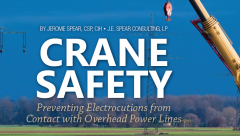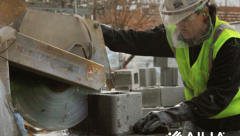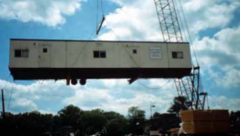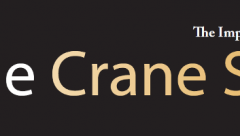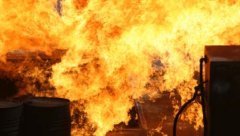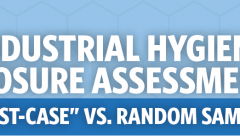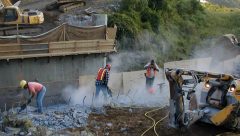Case 1: A 28-year old construction worker was holding onto a steel ladder beingmoved by a telescoping boom crane. As the crane’s boom was swung in the direction of 7,200 volt power lines, the cable contacted the lines and the worker was electrocuted. Case 2: A co-owner of a steel erection company and three workers…
Category: Top posts
Category for Top Posts
National estimates suggest that about 10 times as many fatal occupational illnesses occur compared with fatal occupational injuries.¹ Furthermore, one study concluded that the risk of developing an occupationally-related disease over a lifetime in a construction trade is two to six times greater than for non-construction workers.² For various reasons, awareness and efforts to manage…
Factors Affecting Rated Capacity The first step in creating a lift plan is to understand the factors affecting the strength and stability of mobile cranes. Some of these factors are described below. Machine configuration. Load chart ratings may only be applied if the machine is rigged according to the manufacturer’s specifications. Some questions to consider…
By Jerome E. Spear, CSP, CIH From 2011 to 2015, the Census of Fatal Occupational Injuries (CFOI) reported 220 total crane-related deaths, an average of 44 per year over this five-year period (CFOI, 2017). A 2009 study by The Center to Protect Workers’ Rights examined the causes of crane-related deaths based on data obtained from…
By Jerome E. Spear, CSP, CIH A few years ago, I investigated an incident involving a fire that resulted from the transfer of a flammable liquid mixture. A driver of a chemical supplier was delivering a load of product to a customer. The product consisted of a solvent solution containing toluene and other flammable ingredients.…
By Jerome Spear, CSP, CIH An industrial hygiene exposure assessment is the process used to evaluate a person’s exposure to a chemical or physical agent. However, in order to measure a worker’s “actual” exposure, a monitor would be required to be placed in his/her breathing zone each and every day, which is typically cost-prohibitive and…
By Jerome E. Spear, CSP, CIH OSHA requires employers to determine Cr(VI) exposures to employees. Options for exposure determinations include initial and periodic exposure monitoring and/or the use of objective data. If objective data is used, the data must reflect workplace conditions closely resembling the processes, types of material, control methods, work practices, and environmental…
By Daniel P. Mahoney, Brian D. Mahoney and Jerome Spear Lawn tractors are a familiar sound throughout suburban neighborhoods as individuals cut their grass each week. Based on a noise dosimetry study, riding on a lawn tractor presents an average noise exposure in the range of 86.5 to 96.4 dBA. Running the blade adds 1.2…
By Jerome E. Spear, CSP, CIH Noise, or unwanted sound, is a by-product of many industrial processes. Sound consists of pressure changes in a medium (usually air), caused by vibration or turbulence. These pressure changes produce waves emanating away from the turbulent or vibrating source. Exposure to high levels of noise causes hearing loss and…
By Jerome E. Spear, CSP, CIH Silica dust is hazardous when very small (respirable) particles are inhaled. These respirable dust particles can penetrate deep into the lungs and cause disabling and sometimes fatal lung diseases, including silicosis and lung cancer, as well as kidney disease. From 2005 through 2014, silicosis was listed as the underlying…

